Porsche Taycan Vs Tesla Model S Comparison


“Cool, but is it better than the Tesla?”
Without exception, this question has come up in every single Porsche Taycan conversation I’ve had with family and friends. It’s typically the second one about the German EV; the first is about pronunciation (“tie- kahn“). People don’t normally say which Tesla they mean, which shows the power of the brand, like Google, Kleenex, and Coke before it. But we all know folks mean the Model S—including Porsche itself.
In fact, that’s who initiated this comparison. Porsche Canada saw an opportunity when one of its dealers received a 2019 Model S 100D trade-in. Since Tesla itself doesn’t interact with journalists, and there’s no fleet to speak of in the Great White North, Porsche has been lending the car out alongside the Taycan 4S for comparison purposes. Is that unusual? Certainly. Does it mean some aspects of this particular model, showing a little over 20,000 km (12,500 miles) on its odometer, aren’t directly comparable to the relatively box-fresh Porsche? Also yes. Nonetheless, unless you’re looking at the just-updated Model S, this particular unit is broadly similar to the ones found at Tesla stores now.
Get a Quote on a New Porsche Taycan or Tesla Model SWe spent a week with these two mega-quick, mega-money sedans to see how they stacked up. Is the Tesla’s range really that much better than the Porsche’s? Is the Taycan worth the substantial price difference? Answers to these questions and more ahead.
Interior and Cargo Space

Model S: The Model S was the first ground-up Tesla design, and little has changed inside since it arrived in 2012. Minimalism is the name of the design game here, with a simple dash design and a honking big 17-inch, portrait-style touchscreen smack in the middle. Back at launch that was impressive, and nearly a decade later, legacy automakers are only now catching up with similar screen real estate. The dashboard surrounding it is less impressive however, with large gaps between the plastic and wood. Further down, the center console cover feels cheap to pop open. Exacerbating the issue is its low, low placement, feeling more like an economy car than a substantial luxury four-door. A lack of any door-panel storage is another early demerit for the Muskmobile.
The leather wrapping the seats and steering wheel feels merely okay too. On the flip side, the seats are more accommodating than the Taycan’s. They won’t hold you as tight when the road twists, but they allow for both myself and managing editor Kshitij to get comfortable easily. He calls them “spacious armchairs, but rather flat.” Heated seats front and back are standard, but ventilation isn’t available.
The second row of the Tesla allows it to claw back some points. Simply put, it’s the more comfortable of the two. Both cars come with expansive glass roofs—very cool—but the Tesla’s rear doors are actual-adult-sized. Once in, rear-seat occupants can stretch out their legs, and headspace is also better. Pop the trunk at either end of the Model S, and you’ll find more storage space than the Taycan.

Taycan: The Porsche immediately sets itself apart as the sportier of the duo, just from the drop to the driver’s seat. This elder millennial appreciates the sense of occasion, but middle-aged folks—you know, the more likely buyers—may not. These heavily-bolstered buckets are also very comfortable, though you’ll need to be of slighter build to get the most out of them. This particular tester has a blue vegan interior, which replaces the typical cow-hide with a more interesting, textured feel. We like it, and the fact it contributes 80 percent less CO2 to produce than leather is a welcome bonus.
The Taycan doesn’t have one screen to challenge the Taycan; it has four. Three of them are standard, from the curved glass instrument panel to the duo stacked in the center of the dash. The fourth is optional, filling in the space directly ahead of the front passenger. Material fit and finish is typically Porsche, which translates to soft-touch surfaces and zero rattles.
SEE ALSO: Why the Taycan is the Best Porsche to Drive From Toronto to Ottawa and BackSneaking into the rear row of the Taycan is much tougher than the Tesla. The door aperture is smaller for one, while that aggressive roofline eats into headspace. It’s not uncomfortable for yours truly at 5’10”, but you wouldn’t want to stick three adults abreast back there. Legroom is also noticeably more dear in here.

Bottom Line: The Taycan is easily the more visually stunning of this pair. It’s newer, it costs more, and it has a famously design-forward brand behind it. The Tesla doesn’t always feel like a luxury car, despite its price: there are cars listing for half its MSRP with more impressive innards. That said, the Model S is spacious, and is the room to stretch out not a prime luxury tenet in itself?
It’s close, but the Taycan has first blood here. The specialness of its cabin outweighs the slight space advantage the Model S.
(Editor’s note: Elon really threw us a curveball with that updated 2021 Model S, too. It features what looks like a much-improved interior, with quality fittings and a new landscape-oriented screen. That weirdo steering wheel, er, yoke, could be a serious safety issue, though. C’mon Tesla: send a tester our way.)
Tech and Features

Model S: For better or worse, nearly everything the Model S offers is contained within that main touchscreen. Spend a few minutes with the Model S, however, and you quickly learn the lay of the digital land. Modifying car settings is quick and painless. The built-in navigation system is pretty intuitive as well, which is all the better, since the Model S doesn’t allow for either Android Auto or Apple CarPlay.
SEE ALSO: 2021 Tesla Model S Gets More Power, Revamped Interior and Bizarre Steering WheelThere are a lot of silly gimmicks available within the Tesla’s main screen. It’ll fart on command for example, like the neighbor kid your parents didn’t like you hanging out with. You can play the notoriously difficult Cuphead, or a selection of other games—while stationary. There’s in-car karaoke too. Does any of this contribute to a better, more enjoyable driving experience? No, but people will ask to see it all when they first get in the car.
Unfortunately, the already yellowing frame of the screen is not exactly inviting. No wonder Tesla has been asked to recall them.
A gaggle of sensors and exterior cameras provide additional eyes when in tight spots. The Tesla’s setup is the better of the two: the Taycan’s extreme fish-eye rear camera makes it harder to judge. A handy graphic between the dials keeps drivers aware of any vehicles nearby while out on the road, too. It’s quite glitchy however, with big-rig trucks in particular jumping all over the place when you’re at a stop. It feels like a beta, which is part of the appeal for some when it comes to Tesla.
Speaking of betas, Tesla’s misleading “full self-driving” tech is not present here.

Taycan: The Taycan takes a different approach to high-tech feel, thanks to the quartet of screens inside. It’s a bit of a mixed blessing: the curved panel in front of the driver is deeply impressive, but the wheel will likely block some info, no matter how you adjust. It also hides the shifter, which is awkwardly located behind the right side of the wheel.
The passenger screen is of limited use too. It’s basically a stripped version of the center panel. Save the cash.
Other optional bits are generally more useful in the Taycan, though there remains the question of why they’re optional to begin with. Heated seats? You’ve gotta pay. Adaptive cruise control? An alarming $2,050 ($2,330 CAD). The 2+1 setup in the second row also runs a few hundred. We do enjoy the gorgeous glass roof and upgraded LED headlights, though. The Premium Package also includes the surround-view camera. As mentioned above, the Taycan’s camera system isn’t as intuitive as the Tesla’s, but you’ll want it: those pretty rear hips and tiny rear window say so.
Porsche’s user interface is a good one, with speedy responses and logical layouts. “The haptic feedback screen on the center console screen though a bit unfamiliar at first, feels intuitive after just a few minutes,” says Kshitij, who’s meeting the Taycan for the first time here.

Bottom Line: The Tesla can feel a little underwhelming at first here, if only because its features are all tied to that single screen. Dig a little though, and not only do you find more features, you find the system more intuitive than the Porsche’s. The kicker: everything on the Model S is standard, whereas the Taycan needs a whole bunch of option boxes ticked. Point for Elon & Co.
Powertrain and Driving Feel

Model S: This particular Model S, the 100D, is no longer available from your friendly neighborhood Tesla store. As the badge on the back implies, it carries an even 100-kWh battery pack, with two electric motors drawing from it. Outputs stand at 483 hp and 487 lb-ft of torque. Truth be told, it feels even stronger than that, despite the two years and 12,500 miles the Model S has already covered. At highway speeds, the Tesla piles on speed like it’s been dropped out of a window. Both of us feel it’s quicker than the Taycan for passing maneuvers, even if its quoted 0–60 mph (0–96 km/h) time is 0.3 seconds slower (4.1 seconds).
On the highway, the Model S is a comfortable cruiser, thanks to a standard air suspension. While it’s a cosseting ride, the wind and road noise is much higher in here than the Porsche. The softer settings also mean the Model S takes longer to settle when it encounters bumps and potholes in the city. Taking it through a series of fun back-road corners, the Tesla responds to turns of its huge steering wheel at a relaxed, borderline lazy rate. This one doesn’t have the P prefix on its badge, and it’s clear that straight-line performance is its preferred avenue. Work within its modest limits and the Model S will do as its told, but you never get the feeling it truly relishes the twisties.

Taycan: Where the Tesla feels like it gains weight as the road’s angles pile up, the Taycan shrinks. Sure, the helm is a little light, but swapping over to a sportier mode makes it feel more natural.
On paper, these two are surprisingly close. The Taycan uses an optional 93.4-kWh battery pack—a bump from the stock 79.2-kWh item, but still below the Tesla. A pair of electric motors produce 482 hp and up to 479 lb-ft of torque during launch control. Kshitij can’t help but grin when using that particular party piece—especially as it temporarily bumps the pony corral to 562. The Taycan uses a unique two-gear transmission for the rear motor however, which allows it to peel off incredible start times, yet also cruise at a more battery-friendly draw rate. We both love the spaceship-like Electric Sport Sound too.
The Taycan has the grip in the corners, but it’s also a pretty excellent cruiser. Outside noise is much less noticeable in it than the Model S, likely due to the Taycan’s slippery shape. The air suspension is notably firmer, yet takes any road irregularities in stride. It’s never what you’d call uncomfortable, even for passengers; instead, there’s an ever-present undercurrent that suggests the Porsche wants to go have fun.

Bottom Line: This one is super-easy: Porsche, no contest. In the EV world, the Taycan is the 911: agile, approachable, keen in any weather. The Model S is a Charger Hellcat: it feels faster, but it’s unwieldy when it meets a corner. Ease up and the Porsche sacrifices little to its American competitor, offering a slightly firmer highway ride—but a quieter one, too.
Range and Charging

Model S: We didn’t try a full charge cycle with these cars together, but we did do an important test with both on the day we got them. Both cars showed 99 percent charge on pick-up, with the Tesla reading 500 km (310 miles) of range. We would end up taking them on a 124-km (77-miles) loop, which included an hour’s stop in the middle for all necessary photography. The route traced through the city, onto the highway, a twisty couple miles of country road, and back into town. Both cars would be left in normal driving mode, with light brake regen.
At the finish line, the Tesla was showing a remaining range of 315 km (195 miles). It burned through 185 km (115 miles), or roughly 50 percent more than the distance travelled. Again, this included the photo op stop. Outside temperatures hovered right around freezing.
Charging the Model S is easy-peasy: find a Supercharger nearby, plug the car in, and wait. The system automatically charges whichever Tesla account is associated with the car. The only issue I personally ran into was trying to disconnect, which took a few tries. Charging took longer than the original quote, with the lower temps likely contributing. Tesla offers home charging setups as well.

Taycan: At the start of our test, the Taycan’s swanky curved screen showed 388 km (241 miles) of range—notably better than the EPA quotes. A couple hours later, it sat at 233 km (145 miles). Saving you the math, that’s a difference of 155 km (96 miles), or more efficient than the Model S.
Charging is pretty easy with the Porsche too: using Electrify Canada, we headed to one of the 350-kW charging stations within the city. Plug the car in, find the charger in the right phone app, and activate: like the Tesla, it uses a pre-existing account to charge. Like the Tesla, the Taycan charged slower than quoted—much slower, in fact, capping at around 60 kW. We chalked it up to cold weather, again.

Bottom Line: Extrapolating out from our test loop, the Tesla would still travel further on a single charge: the Taycan would get through 2.5 test loops before its battery was fully drained. At that point, the Tesla would still have a bit of juice, but only around 38 km (24 miles). Newer versions of the Model S go further still. The charging infrastructure is a tougher call: Tesla’s Supercharger system is vast, but it’s proprietary. The Taycan can charge at more places, but you’ll need to hunt to find 350-kW spots, at least for now. More likely, both will primarily be charged at home.
Call this one a draw.
Styling

Model S: “Its proportions are very American,” says Kshitij. “Everything about it is large, be it the wheels, hood, the doors, infotainment, steering wheel even the window switches are a size too big.” Beyond a slight nose job when the Model 3 first debuted, Tesla hasn’t done much to the Model S’ exterior. Even the 2021 update sticks to the script. It’s easy to see why: the Model S has become the de facto poster boy for EVs, like the Prius did for hybrids a decade earlier. The styling is simple, but easily identifiable, and has aged well. Our biggest complaint is that Tesla still offers it in an utterly basic color palette.
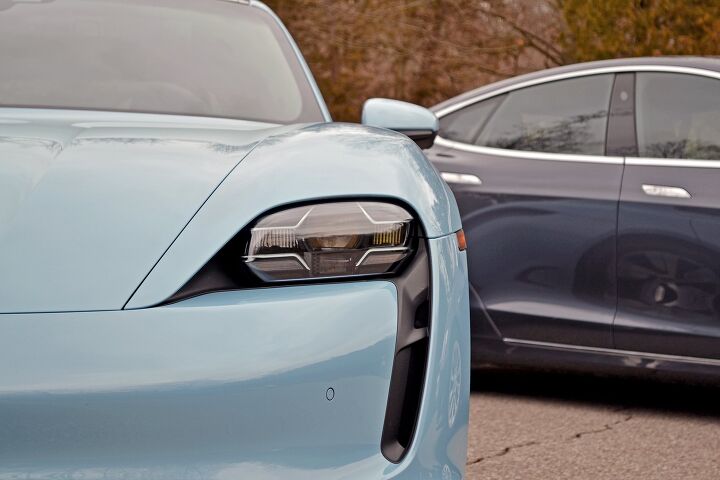
Taycan: Want to make the Tesla seem utterly invisible? Park it next to this Frozen Blue Taycan. No matter where we went, the Taycan drew looks. Porsche has had a mixed history of adapting 911 design cues to other shapes—cough, first Cayenne—but it hit a home run with its first EV. Impossibly low and wide for a four-door, it “wouldn’t look out of place in Blade Runner,” says Kshitij. The single-bar LED is our favorite feature of them all. The chunky 19-inch wheels are more divisive. (The car was ordered with 21s, but the 19s are wrapped in very necessary winter rubber.)

Bottom Line: Outside of the BMW i8, no car looks more like it stepped out of a portal from the future than the Taycan.
Pricing

Model S: When it was available in 2019, the Model S 100D listed for $94,000 ($110,000 CAD). Options were limited to paint (like the gray here) and the enhanced driver assist suite (absent). The freshly facelifted 2021 lineup kicks off with the $81,190 ($114,990 CAD) Model S Long Range. It’s a great example of evolution: for a lower list price, it features a longer range (412 miles / 663 km), more power, and quicker acceleration. The nutty 1,000-plus horsepower Plaid and Plaid+ models start at $121,190 ($159,990 CAD) and $141,190 ($189,990 CAD), respectively.
Options are pretty simple: paint color, wheel style, interior style, and upgraded driver assist suite. Just don’t call it full self-driving, because it isn’t.

Taycan: The Taycan 4S rings up at $105,150 in America, and $120,900 in Canada, both including destination. South of the border, the new, rear-drive Taycan is available from $81,250. Moving up the lineup, there’s the $152,250 ($176,500) Taycan Turbo—already slightly more than the top Model S—and the $186,350 ($216,350), 750-horsepower Turbo S.
Porsche’s options lists are famously vast, and the Taycan’s is no different. The larger battery in our 4S tester is a key one, but the rest of the boxes ticked here total up a whopping $141,720 ($165,410 CAD).
Bottom Line: We can’t paint it another way: the Tesla undercuts the Porsche across the board. That’s a win.
Verdict: Porsche Taycan 4S vs Tesla Model S 100D Comparison

This was a closer comparison than either of us expected, even if we’ve long maintained these two aren’t exactly direct competitors. Adding up the wins above—and ignoring subjective styling—it’s a tie. Both of these cars are fantastic: we don’t want to choose between burgers and bratwurst.
Neither of these vehicles is exactly affordable to the everyman, but the Tesla undercuts the Taycan by so much you could, as Kshitij points out, pick up a Model S and a Model 3 for the same price.
At nearly six figures, however, we don’t think it’s unreasonable to expect more quality. This tester’s wavy body panel gaps and low-rent interior pieces are not unique: it’s a problem that has long dogged Tesla, and there’s no guarantee that will change with the refreshed models. If you’re dropping this sort of money on a car, we think a little extra for something with higher quality and a longer reputation for reliability is worth it.
Due to that, the Taycan just edges ahead in our minds. The Model S remains an impressive bit of kit, but if you can afford the Porsche Taycan, it’s the one to have.
Become an AutoGuide insider. Get the latest from the automotive world first by subscribing to our newsletter here.

Kyle began his automotive obsession before he even started school, courtesy of a remote control Porsche and various LEGO sets. He later studied advertising and graphic design at Humber College, which led him to writing about cars (both real and digital). He is now a proud member of the Automobile Journalists Association of Canada (AJAC), where he was the Journalist of the Year runner-up for 2021.
More by Kyle Patrick















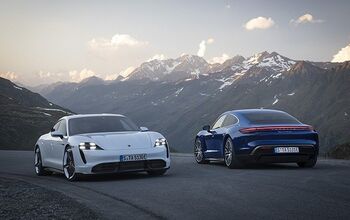



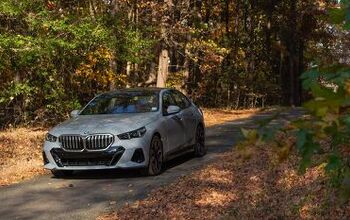






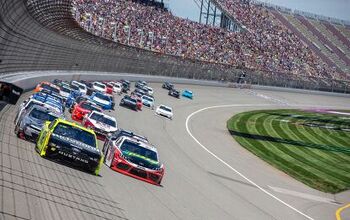

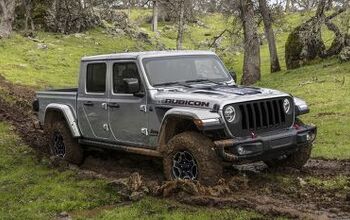


Comments
Join the conversation